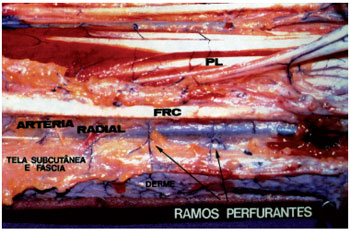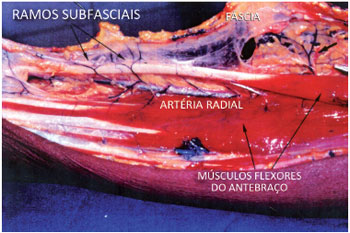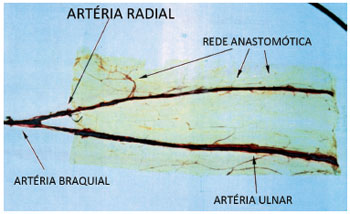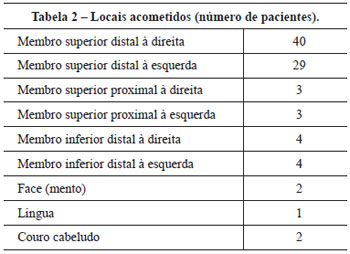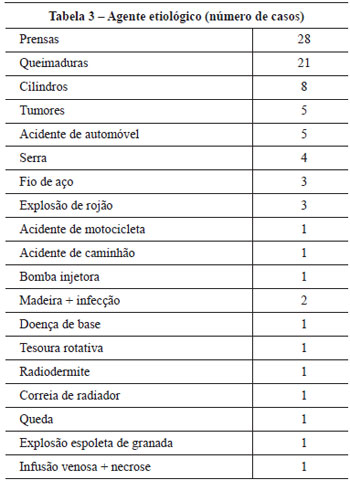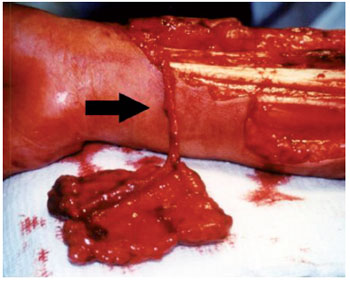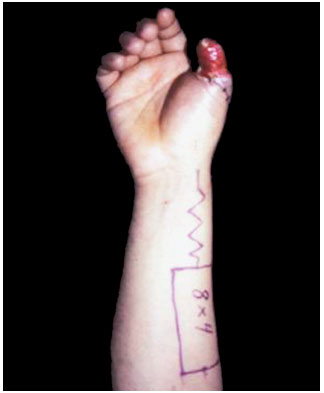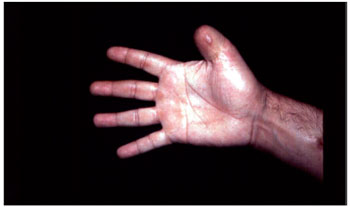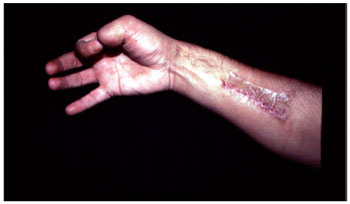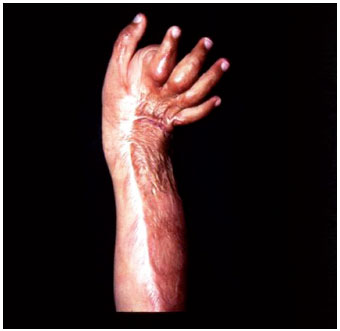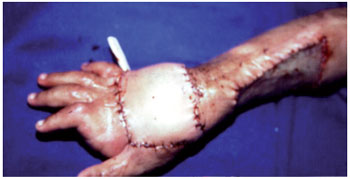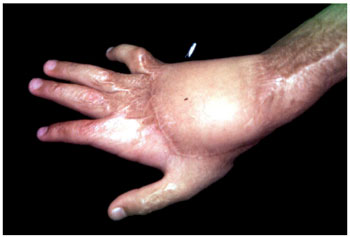ABSTRACT
Introduction: In the search of skin segments that allow the transport among areas, the fascio-cutaneous forearm flap or Chinese flap arised. It was originated in anatomical studies accomplished by Fan, Qui and Zi, at the Shenyang Military Hospital, in 1978. The objective of this study is to demonstrate the multiple applications and the results obtained with the antebraquial flap. Method: The sample counted with data regarding 89 patients; 84.26% were male and 15.74% female. The forearm flap was used for covering the hand and fist in 61 patients, for thumb reconstruction in 10 patients, as free flap in 15 and in 3 patients it was used with direct flow. Results: Among the 89 patients, 2 developed total flap necrosis. One case developed slightly necrosis of the skin. None of the patients presented blood supply alterations in the hand after the radial or ulnar artery ligature. There was satisfactory covering of the areas, with good results. Conclusions: The antebraquial or "Chinese" flap is indicated for tegument covering in any area of the human body, with good aesthetic and functional results, so much for the donor area as for the rebuilt area.
Keywords: Surgical flaps. Soft tissue injuries. Outcome assessment (health care). Anatomy.


